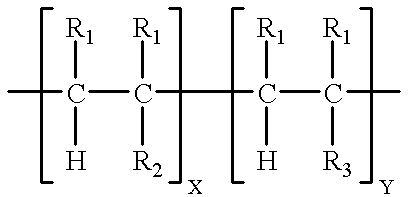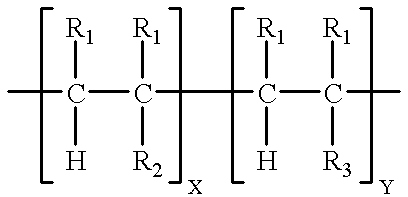Inks containing glycol ethers and specific polymers for dry time and bleed improvements in ink-jet printing inks
a technology of ink-jet printing and glycol ether, which is applied in the direction of inks, printing, organic dyes, etc., can solve the problems of bleed and halo, affect the speed of the printer itself, and smears and smudges can occur, so as to achieve good bleed and halo control
- Summary
- Abstract
- Description
- Claims
- Application Information
AI Technical Summary
Benefits of technology
Problems solved by technology
Method used
Image
Examples
example 2
Five black inks were prepared according to the formulations given in the table below; concentrations are expressed as weight percentages. They all contain 3% of a proprietary anionic self-dispersing pigment.
All inks are adjusted to a pH of 8.5 using KOH. The inks are filled into HP 2000c ink-jet pens. Color ink is the same as in Example 1. Dry times are measured under similar conditions as in Example 1. Inks containing PtB dry significantly faster than the ink that does not contain PtB.
Industrial Applicability
The method of reducing dry time and bleed is expected to find use in ink-jet printing applications, especially those utilizing pigment-based inks.
PUM
| Property | Measurement | Unit |
|---|---|---|
| pKa | aaaaa | aaaaa |
| wt % | aaaaa | aaaaa |
| pKa | aaaaa | aaaaa |
Abstract
Description
Claims
Application Information
 Login to View More
Login to View More - R&D
- Intellectual Property
- Life Sciences
- Materials
- Tech Scout
- Unparalleled Data Quality
- Higher Quality Content
- 60% Fewer Hallucinations
Browse by: Latest US Patents, China's latest patents, Technical Efficacy Thesaurus, Application Domain, Technology Topic, Popular Technical Reports.
© 2025 PatSnap. All rights reserved.Legal|Privacy policy|Modern Slavery Act Transparency Statement|Sitemap|About US| Contact US: help@patsnap.com



